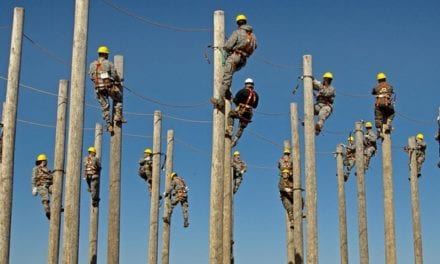 Most American drivers are feeling the pinch of higher gas prices at the pump. The US Energy Administration reports the average price of regular unleaded gas in May, 2014, to be $3.76 per gallon, more than twice the cost of gas when Obama was first sworn into office. During this same period of time, the Environmental Protection Agency reports that the overall average efficiency for cars has not increased much, a mere 15% in some classes of vehicles, and less in others. Even though many consumers seem to be more interested in living green, reducing emissions, and conserving resources, new information is coming to light to make consumers aware that it takes more than buying green to be green. For example, many of the new hybrid cars, such as the Honda Prius and others, can actually pollute more than standard cars (Scientific American, Jan. 2014). Consumers are left wondering how to reconcile these issues. Hypermilers have the answer. Hypermilers are conscious drivers who choose to change their driving habits to get the most out of a gallon of gas. Many hypermilers get more miles per gallon, while driving cars made in the 1990’s, than yuppies driving today’s best hybrids (Hypermiling.com). What drivers are beginning to realize is that the cost of gas, both in money and environmental damage, depends more on how you dive than what you drive.
Most American drivers are feeling the pinch of higher gas prices at the pump. The US Energy Administration reports the average price of regular unleaded gas in May, 2014, to be $3.76 per gallon, more than twice the cost of gas when Obama was first sworn into office. During this same period of time, the Environmental Protection Agency reports that the overall average efficiency for cars has not increased much, a mere 15% in some classes of vehicles, and less in others. Even though many consumers seem to be more interested in living green, reducing emissions, and conserving resources, new information is coming to light to make consumers aware that it takes more than buying green to be green. For example, many of the new hybrid cars, such as the Honda Prius and others, can actually pollute more than standard cars (Scientific American, Jan. 2014). Consumers are left wondering how to reconcile these issues. Hypermilers have the answer. Hypermilers are conscious drivers who choose to change their driving habits to get the most out of a gallon of gas. Many hypermilers get more miles per gallon, while driving cars made in the 1990’s, than yuppies driving today’s best hybrids (Hypermiling.com). What drivers are beginning to realize is that the cost of gas, both in money and environmental damage, depends more on how you dive than what you drive.
The revelation, “How You Drive Matters,” did not escape UPS, one of the world’s largest delivery companies. UPS learned that avoiding left hand turns can save their company millions of gallons of gas per year, reduce carbon emissions, and save nearly $80,000,000 in fuel costs alone (UPS.com). These savings were not from buying new equipment; they were gained simply by using existing trucks more efficiently. Hypermilers have employed that mentality all along. It’s about getting the most from what you already have and being a responsible consumer. If the policies of UPS are revolutionary, the hypermilers are revolutionary-on-steroids. They employ all the tricks at their disposal and many report astounding results.
Hypermilers know their cars, and they use that knowledge to their advantage. The fuel efficiency of any car is highly dependent on what gear the car is in and how fast the car is travelling. Every car has a sweet-spot, usually around 45MPH. According to many hypermilers, choosing to travel roads that are slower instead of jumping on highways can increase fuel efficiency as much as 30% (Hypermilers.com). This is in keeping with what the US Department of Energy has stated all along, “aggressive driving can lower gas mileage by 33%” (fueleconomy.gov), and those figures only include how fast drivers accelerate and stop while driving. Add to that some of the more extreme measures hypermilers employ and fuel conservation skyrockets, often doubling the MPG drivers enjoy from their vehicles.
Altering how you drive is the most important aspect of fuel economy. According to TomTom.com, a GPS mapping organization which cooperates with hypermilers through software and shared forums, each 5 MPH over 50 costs the average consumer about $.26 per gallon. These revelations have prompted many hypermilers to buy software that works with their smartphone and car computers. TomTom reports that drivers who use this type of software save another 10% ($.37 today) off every gallon of gas, just by being informed and making small changes. By employing this knowledge, hypermilers can change their habits to maximize fuel efficiency. By coasting down hills, turning cars off when idling, and accelerating optimally, drivers can often save as much as half a gallon of gas every hour they drive.
Some hypermilers don’t stop at modifying their behavior. Many include vehicle modifications like engine tweaks and external wind panels under their cars. According to many reports on websites like Cleantechnia.com and others, these modifications squeeze another 10% to 15% from every gallon of gas. Soon, the efficiency hypermilers enjoy surpasses the MPG today’s hybrid cars claim, without polluting the environment by manufacturing another vehicle.
Other techniques hypermilers employ include lifestyle changes. Riding bikes when possible, parking in the shade, removing excess weight and cargo, planning trips to coincide with wind directions, drafting behind semi-trucks, combining errands, keeping windows up to reduce drag, employing overdrive, parking in through spaces, using a block heater and even choosing the Easypay option for tolls all play into efficiency (Over a hundred similar tips can be found at EcoModder.com). Even if you are not interested in becoming an extreme hypermiler, some small changes can cut your gas costs by as much as 30%. In an era when people wait in line to save a few cents per gallon, it makes sense to stretch your efficiency and save ten times as much simply by remembering that the real cost of gas depends on how you drive.


















